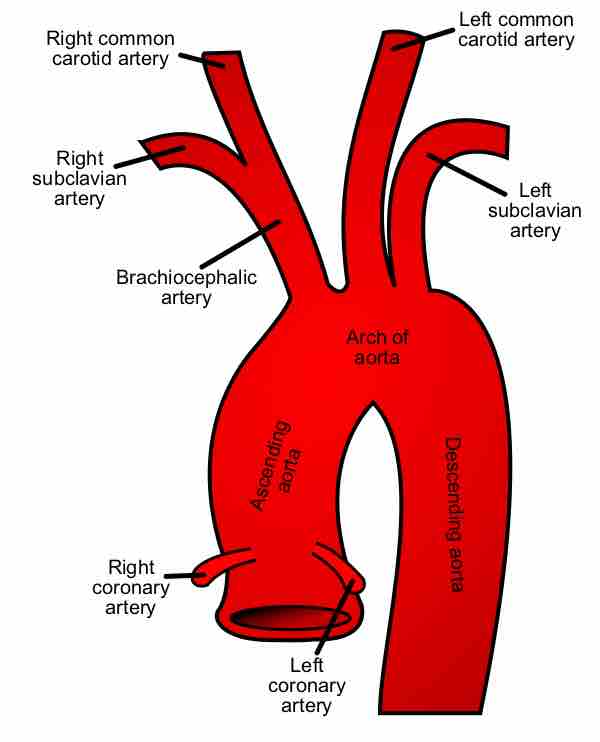The ascending aorta is a portion of the aorta beginning at the upper part of the base of the left ventricle, on a level with the lower border of the third costal cartilage behind the left half of the sternum; it passes diagonally upward, forward, and to the right, in the direction of the heart's axis, as high as the upper border of the second right costal cartilage. Its total length is about five centimeters.

Ascending Aorta
The aorta has three parts: the ascending, the arch and the descending.
The aortic root is the portion of the ascending aorta beginning at the aortic annulus, the fibrous attachment between the heart and the aorta, and extending to the sinotubular junction. Just above the aortic valve are three small dilations called the aortic sinuses. The two anterior sinuses give rise to the coronary arteries, while the third posterior sinus does not usually give rise to any vessels and so is known as the non-coronary sinus.
The sinotubular junction is the point in the ascending aorta where the aortic sinuses end and the aorta becomes a tubular structure.
At the junction of the ascending aorta with the aortic arch, the caliber of the vessel increases with a bulging of its right wall. This dilatation is termed the "bulb of the aorta." The ascending aorta is contained within the pericardium. It is enclosed in a tube of the serous pericardium, which also encloses the pulmonary artery.
The ascending aorta is covered at its beginning by the trunk of the pulmonary artery and, higher up, is separated from the sternum by the pericardium, the right pleura, the anterior margin of the right lung, some loose areolar tissue, and the remains of the thymus. Posteriorly, it rests upon the left atrium and right pulmonary artery.